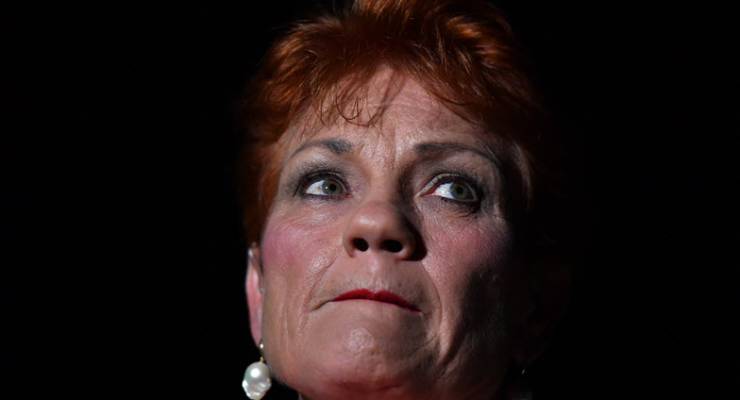
As the result slowly comes into focus, Saturday’s election in Queensland appears to have found ways to bring disappointment to all comers.
Annastacia Palaszczuk will remain Premier, but it’s touch and go as to whether Labor will get to a majority of 47 seats out of 93, as it will need to if Palaszczuk is to honour her depressing pre-election commitment not to make “deals” in a hung parliament.
For a first-term government whose leader enjoyed a strong advantage over her opponent in personal popularity, and which benefited from the unpopularity of a Coalition government federally, this is a distinctly underwhelming outcome.
Labor had factored in a few losses in the state’s economically floundering regions, but a casualty list of as many as four seats is more than they would have bargained for.
Hopes of making up for such losses through gains in south-east Queensland, as was done during One Nation’s first great disruption two decades ago, were only partly realised.
Labor has made only one clear gain in Brisbane and the Gold Coast, although there are a further two seats where they are a better than even chance.
However, any corresponding joy for the LNP has been blunted by its failure to win power, an 8% slump on the primary vote, and a likely defeat on statewide two-party vote (which Labor should win by as much as 52-48).
It was also a bad night for Pauline Hanson, who hopefully doesn’t believe her claim that One Nation can still win as many as ten seats.
Care should be taken not to overstate the party’s failure — its average in the 61 seats where it fielded candidates was around 20%, and the result would have been well in line with its strong pre-election polling if it had run in the other 32.
That’s more than enough to assure the party of a long-term Senate presence, but all it appears to have yielded at this election is the Labor-held seat of Mirani on the central coast, where their candidate looks likely to prevail on LNP preferences.
Nowhere was the LNP seriously threatened by One Nation, who would at best get to around 30% in rural LNP strongholds, then hit the roadblock of Labor preferences.
The biggest danger to the major parties proved to be not One Nation, but independents and Katter’s Australian Party, who could gain four regional seats between them.
There was also disappointment for the Greens, who failed in their bid to unseat Deputy Premier Jackie Trad in South Brisbane.
However, the party had a good night all round — its statewide vote was its highest ever at a Queensland state election, and it is well in the race to gain the inner-west Brisbane seat of Maiwar from the LNP’s Shadow Treasurer Scott Emerson, who will lose to Labor if he doesn’t lose to the Greens.
Labor’s worst case scenarios for the late count could leave them relying on a support from a Green in Maiwar and an independent in Rockhampton, but such support would assuredly be forthcoming.
Alternatively, Labor could yet get its hands on the untrammelled power that comes from being a party that wins a majority in a parliament with no upper house — something it will have achieved with the support of barely more than a third of the state’s voters.








As much as many voters in South Brisbane support Greens policy the stakes were too high to abandon Jackie Trad. There was a scenario that Palaszczuk could be short of a majority by one seat…it could have been Trad’s by a handful of votes. The gamble was too great.
But the Green’s “policies” appeal only in a feel good way, not a govern well way. I might support the Greens as a progressive alternative but only if they make sense or I am so desperate to revolt against the non-liberal LNP or the crushingly right-wing ALP. Not this time. They need to do better than Year 10 essay-style “policy”
+100%
Perhaps it is your comprehension of complex ideas that is the problem.
Neither T1 nor T2 have coherent narratives, flailing wildly about with Adani Yea, loan NO! or just plain Adani YEA! bugger the GBR.
Hmm, a really hard choice.
This is possible, but a strange choice, after all if you were wanting to vote Green then this is a choice between either a Labor majority or a Labor government requiring the Greens for support, which would appear to be a better option if you support Greens policy.
There is no way that the Greens winning South Brisbane could have helped the LNP form Government – either Labor + Greens would have a majority or they wouldn’t – changing South Brisbane between Greens & Labor couldn’t change that since it doesn’t change that Labor + Greens number.
With the welcome demise of Mr Denial Malcolm Roberts, can I speculate & say he must be the stupidest person whoever held a Senate seat.
Johnny B, you don’t remember Albert Field in 1975, then.
Field couldn’t string a sentence together – unfortunately, Roberts can (sort of).
I watched Matt Canavan pronounce the result as a repudiation of Labour and the Premier … and I could not figure whether he was completely delusional or cynically spinning the result for all he was worth … either way it was pathetic as the LNP vote was down a massive 8%!!
Does this mean the end of Malcolm Roberts’ career in the public eye? Is he now free to return to his garden shed to pour over all that weather station data searching for more “evidence” of the UN-Jewish Bankers-Marxists-led climate change conspiracy? I won’t miss him nor his tinfoil hat.